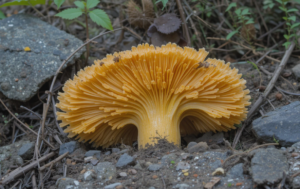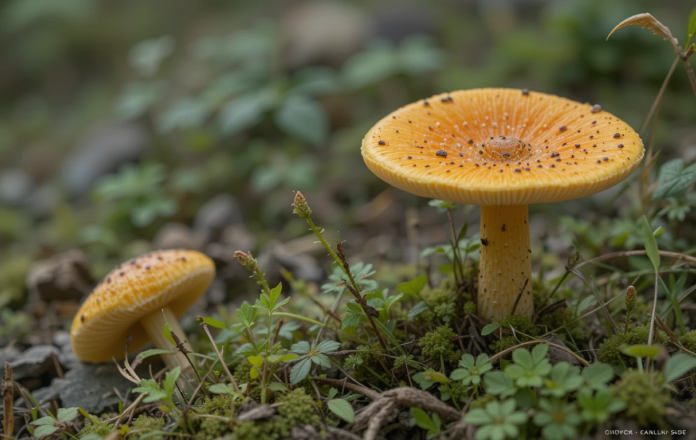“Camagrocs,” known in English as golden chanterelles or yellow foot mushrooms, are a prized culinary ingredient and a favorite among mushroom enthusiasts. In Spanish, they are often referred to as “trompetas amarillas” or “pie amarillo”, but the Catalan name “camagrocs” remains widely recognized across Spain. These mushrooms are celebrated for their vibrant yellow stems, delicate flavor, and versatility in traditional dishes and also camagrocs en castellano buzzfeedz.
In this article, we’ll dive into what makes camagrocs special, how to identify and use them, and their role in Spanish gastronomy.
What Are Camagrocs?
Camagrocs (Craterellus lutescens) are small, funnel-shaped mushrooms that grow in clusters, predominantly in pine forests. Their defining features include:
- Bright Yellow Stems: These contrast beautifully with their darker, slightly curled caps.
- Hollow and Flexible Texture: Their delicate structure makes them unique and easy to distinguish.
- Mild, Earthy Flavor: Ideal for enhancing a wide range of dishes.
Native to many parts of Europe, including Spain, camagrocs are especially abundant in autumn. Mushroom enthusiasts eagerly await this season to gather them from forests, as they are relatively easy to find and harvest and camagrocs en castellano.
Identifying Camagrocs Safely
Foraging for mushrooms can be a rewarding experience, but it’s crucial to ensure proper identification to avoid picking harmful species. Here’s what to look for:
- Cap: Small, dark, and slightly funnel-shaped with a wavy edge.
- Stem: A distinctive bright yellow, slender, and hollow.
- Habitat: Found under pine trees in damp, mossy areas.
- Smell: A subtle, fruity aroma that’s characteristic of chanterelle varieties.
It’s advisable to go mushroom hunting with an experienced guide or use a trusted field guide to avoid confusion with similar-looking but potentially toxic mushrooms.
Culinary Uses of Camagrocs
In Spanish and Catalan cuisine, camagrocs hold a special place for their rich umami flavor and versatility. Here are some popular ways to enjoy them:
- Sautéed with Garlic and Olive Oil
The simplest preparation highlights their natural flavor. A quick sauté with garlic, olive oil, and a sprinkle of parsley transforms camagrocs into a delectable side dish. - In Rice and Paella Dishes
Camagrocs add depth to classic Spanish rice dishes, such as paella or arroz caldoso. Their earthy tones complement the saffron and other spices beautifully and camagrocs en castellano. - Soups and Stews
These mushrooms enhance the flavor of hearty stews, particularly those with game or pork. They’re also excellent in creamy mushroom soups. - Preserved in Olive Oil
To enjoy them year-round, many people preserve camagrocs by drying them or storing them in olive oil with herbs. - Pasta and Risotto
Camagrocs pair wonderfully with creamy sauces, making them an ideal addition to risotto or pasta dishes.
The Role of Camagrocs in Spanish Gastronomy
In regions like Catalonia, camagrocs are more than just an ingredient—they’re a tradition. Mushroom foraging, or “setas”, is a cherished autumn activity, with families heading into the forests to gather mushrooms while enjoying the natural beauty of the countryside.
Local markets come alive with freshly picked camagrocs, and many restaurants feature them prominently in seasonal menus. From rustic farmhouse kitchens to high-end establishments, these mushrooms are a symbol of Spain’s rich culinary heritage.
Health Benefits of Camagrocs

Beyond their culinary appeal, camagrocs are packed with nutrients:
- Rich in Antioxidants: These help combat free radicals, promoting overall health.
- Low in Calories: A great choice for light, healthy meals.
- High in Vitamins: Particularly B vitamins, which support energy production and brain function.
Their nutritional profile makes them an excellent addition to a balanced diet.
Preserving and Storing Camagrocs
To make the most of your harvest, proper storage is essential:
- Drying: Camagrocs are perfect for drying, as their hollow stems allow for quick dehydration. Once dried, they can be stored in airtight containers for months.
- Freezing: Sauté the mushrooms lightly before freezing to preserve their texture and flavor.
- Pickling or Preserving in Oil: This method infuses them with additional flavors, making them a ready-to-use ingredient for various dishes.
Conclusion
Camagrocs are a true treasure of the forest, cherished for their unique appearance, rich flavor, and versatility in Spanish cuisine. Whether you’re foraging for them in the wild or buying them fresh from a market, these golden mushrooms are sure to elevate your culinary creations.
Their role in Spanish gastronomy, combined with their health benefits and ease of preparation, makes them a must-have ingredient for any food lover. So, next time you hear “camagrocs,” remember you’re not just talking about mushrooms—you’re celebrating a piece of Spain’s culinary and cultural heritage.

